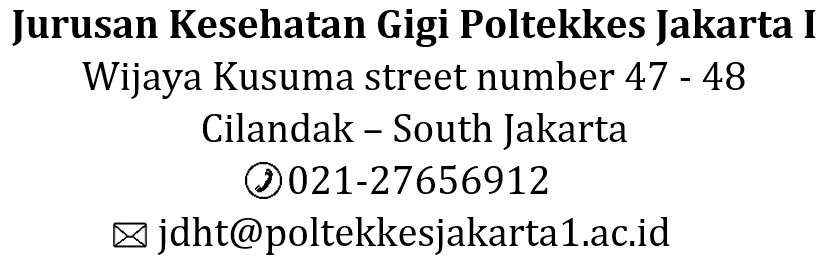IMPLEMENTATION OF ART THERAPY TECHNIQUES ON TOOTHBRUSHING SKILLS FOR SCHOOL-AGE CHILDREN IN KUTA TRADITIONAL VILLAGE
Keywords:
Art therapy, skills, childrenAbstract
Background: The 2023 Indonesian health survey shows that the prevalence of dental caries in Indonesia is 43.6% and the prevalence of cavities in Jawabarat Province is 48%. Based on the characteristics of the age group of 5-9 years is 49.9% and the age group of 10-14 years is 37.2%. Method: This research method is the Quasi Experimental method with One Group Pre-test and Post-test Design. Data analysis used the Wilcoxon Test, with a sample of 32 children aged 6-12 years from Kuta Traditional Village, which is a traditional village located in the area of Karangpaningal Village, Tambaksari District, Ciamis Regency, West Java. The measuring instrument uses an observation sheet of brushing skills. Results: The skills before being given counseling were 3.7 with an average of less skilled criteria, after being given counseling to 8.3 with an average of moderately skilled criteria. Conclusion: The value of p = 0.000 shows that there is an effect of counseling using art therapy techniques on toothbrushing skills in school-age children in Kuta Traditional Village.Downloads
Download data is not yet available.
Published
2024-10-16
How to Cite
Kusmana, A., Widyagdo, A. ., Suharja, E. S. ., Tiana, M. ., & Wulansari, E. . (2024). IMPLEMENTATION OF ART THERAPY TECHNIQUES ON TOOTHBRUSHING SKILLS FOR SCHOOL-AGE CHILDREN IN KUTA TRADITIONAL VILLAGE. JDHT Journal of Dental Hygiene and Therapy, 5(2), 92–96. https://doi.org/10.36082/jdht.v5i2.1869
Issue
Section
Articles
Copyright & Licensing
Copyright (c) 2024 Aan Kusmana

This work is licensed under a Creative Commons Attribution-ShareAlike 4.0 International License.
















